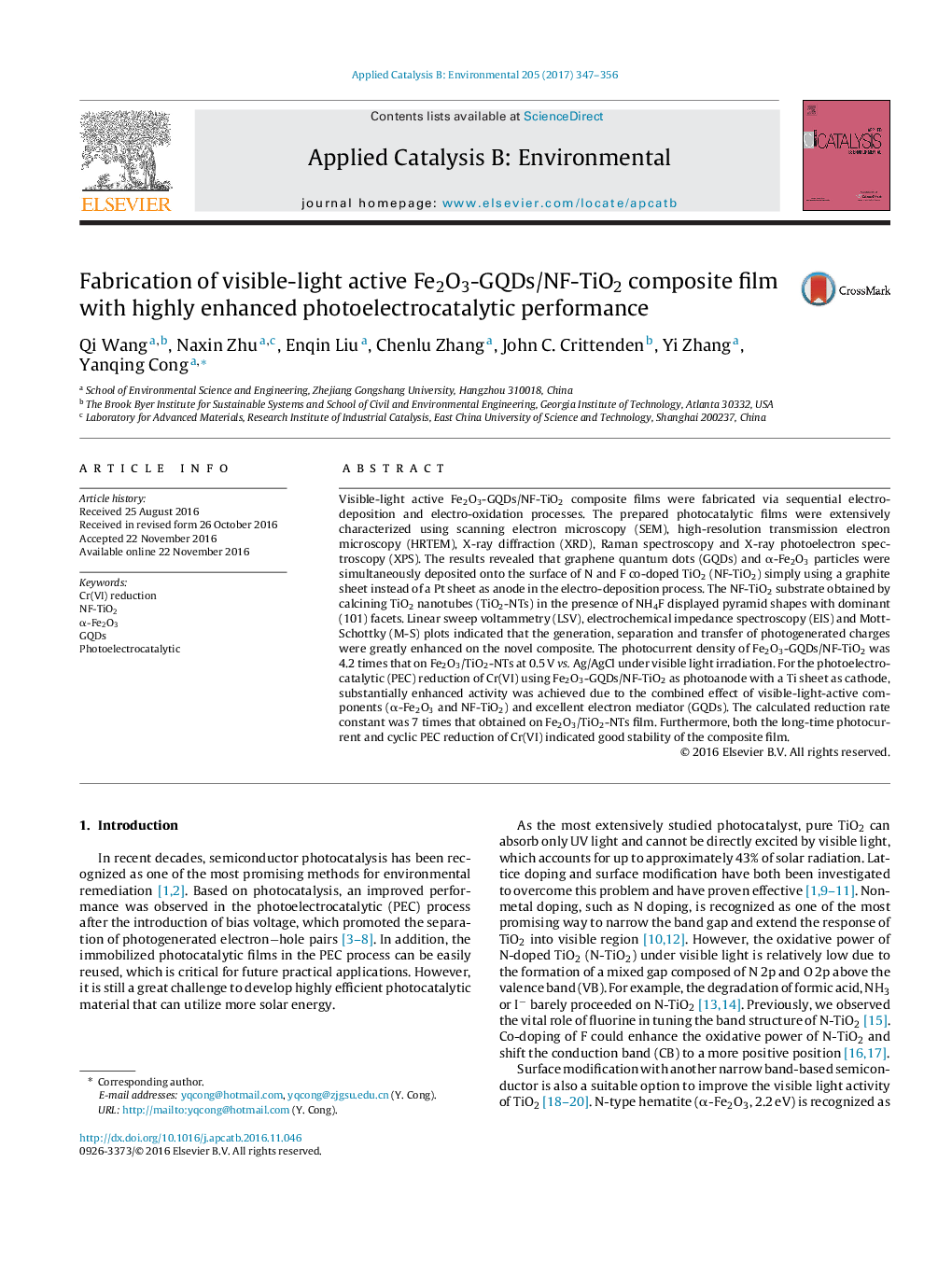| Article ID | Journal | Published Year | Pages | File Type |
|---|---|---|---|---|
| 6454343 | Applied Catalysis B: Environmental | 2017 | 10 Pages |
•α-Fe2O3 and GQDs were simultaneously loaded onto NF-TiO2.•NH4F play vital role in transforming tubular TiO2-NTs into pyramid-shaped NF-TiO2.•Fe2O3-GQDs/NF-TiO2 exhibited superior PEC activity and stability.•kCr(VI) increased by 7 times relative to that on Fe2O3/TiO2-NTs.•Easier generation, separation and transfer of e−-h+ pairs were achieved.
Visible-light active Fe2O3-GQDs/NF-TiO2 composite films were fabricated via sequential electro-deposition and electro-oxidation processes. The prepared photocatalytic films were extensively characterized using scanning electron microscopy (SEM), high-resolution transmission electron microscopy (HRTEM), X-ray diffraction (XRD), Raman spectroscopy and X-ray photoelectron spectroscopy (XPS). The results revealed that graphene quantum dots (GQDs) and α-Fe2O3 particles were simultaneously deposited onto the surface of N and F co-doped TiO2 (NF-TiO2) simply using a graphite sheet instead of a Pt sheet as anode in the electro-deposition process. The NF-TiO2 substrate obtained by calcining TiO2 nanotubes (TiO2-NTs) in the presence of NH4F displayed pyramid shapes with dominant (101) facets. Linear sweep voltammetry (LSV), electrochemical impedance spectroscopy (EIS) and Mott-Schottky (M-S) plots indicated that the generation, separation and transfer of photogenerated charges were greatly enhanced on the novel composite. The photocurrent density of Fe2O3-GQDs/NF-TiO2 was 4.2 times that on Fe2O3/TiO2-NTs at 0.5 V vs. Ag/AgCl under visible light irradiation. For the photoelectrocatalytic (PEC) reduction of Cr(VI) using Fe2O3-GQDs/NF-TiO2 as photoanode with a Ti sheet as cathode, substantially enhanced activity was achieved due to the combined effect of visible-light-active components (α-Fe2O3 and NF-TiO2) and excellent electron mediator (GQDs). The calculated reduction rate constant was 7 times that obtained on Fe2O3/TiO2-NTs film. Furthermore, both the long-time photocurrent and cyclic PEC reduction of Cr(VI) indicated good stability of the composite film.
Graphical abstractFigure optionsDownload full-size imageDownload high-quality image (271 K)Download as PowerPoint slide
